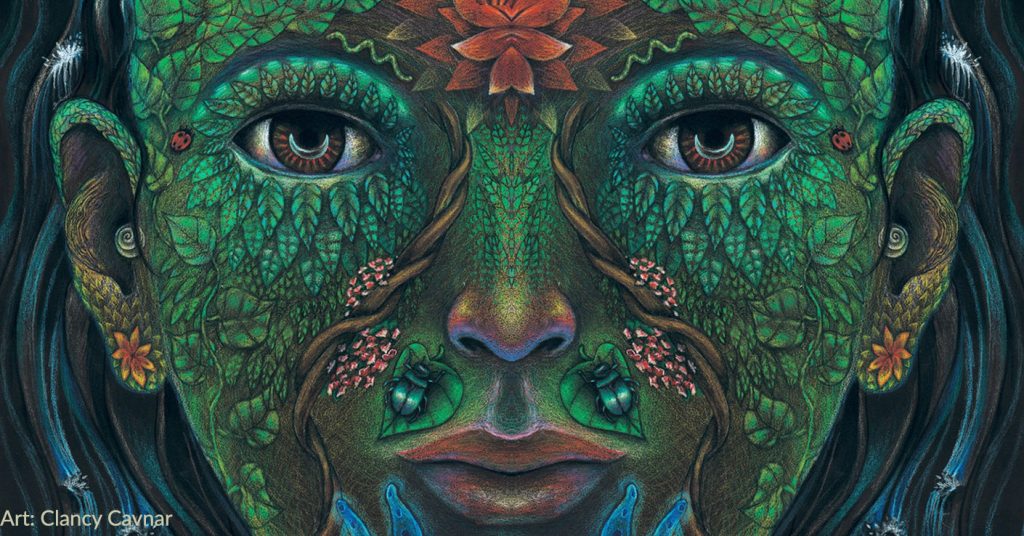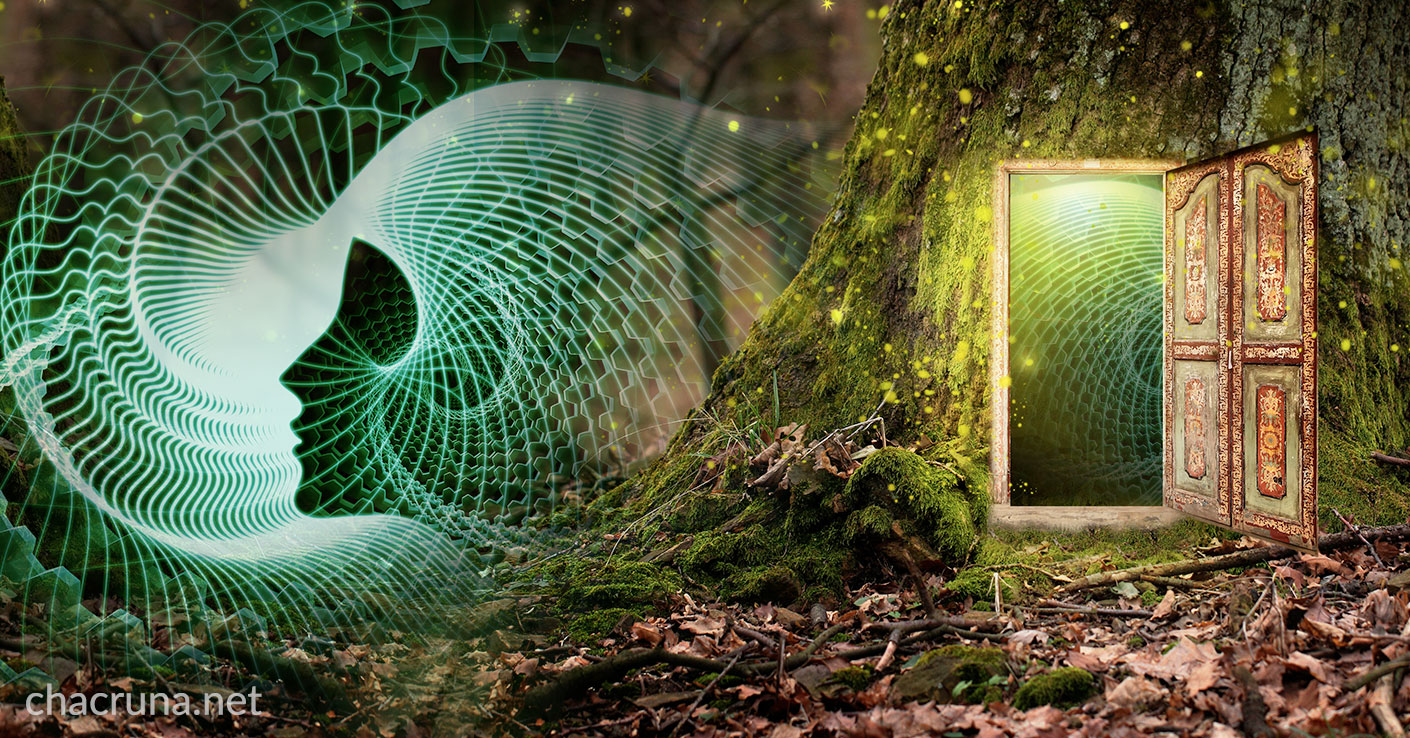- Love and Psychedelic Psychotherapy: Bridging the Divide - February 25, 2021
- Ayahuasca and the Power of Forgiveness - December 14, 2016
- Taking Charge of Your Ayahuasca Integration - June 19, 2017
Integration is a hot topic among ayahuasca circles, and for good reason. Integration can involve emotional and spiritual support before and after ayahuasca use, as well as support to understand and incorporate teachings into day-to-day life. Both the person’s capacity for integration of the ayahuasca experience and the support for such integration can have an important influence on outcomes.1 For example, the integration process can heighten the positive effects of ayahuasca use, and it can make the difference between the unnecessary suffering of a so-called “bad trip” and a worthwhile experience that is both challenging and healing. There are also particular challenges faced by Westerners that make the need for integration all the more compelling. The good news is that more and more ayahuasca drinkers are seeking out this kind of support.2 However, given that access to integration services is still limited, we have compiled a list of practices that will allow you to take charge of your own integration.
Ayahuasca Use Outside of Traditional Contexts
In South American communities where plant medicine is practiced, ayahuasca is an integral part of the culture. This is not true for Westerners; we travel to foreign lands to attend traditional or hybrid ceremonies or we participate in ceremonies close to our own homes, far from the medicine’s roots and cultural container. In fact, one of the biggest challenges people face when returning home from an ayahuasca experience is a lack of community. This can be especially true in underground communities where discretion is part of the culture. As such, the sense of alienation and disconnection that most Westerners experience—whether consciously or subconsciously—can become magnified. At the same time, a strong community is essential to the health of an individual,3 and personal growth and healing can be maximized when one feels a sense of belonging, both socially and spiritually.
Acute and Lingering Emotional Pain
Beyond a possible lack of cultural context or community, people can have difficult experiences in ayahuasca ceremonies. Ayahuasca use can also lead to a stripping of old psychological defenses, leading to a rising up of fear, shame, disgust, anger, and grief, and these sometimes challenging states can persist for some time.4 It is also common for individuals to experience dramatic shifts in their views of themselves and others; even of their view of the world and their role in it. Integration practices can help these individuals to navigate the changes that accompany such profound internal transformation. In more extreme cases, old traumas can resurface, a surge of psychiatric symptoms can ensue, or an individual can have an unfortunate encounter with a mal-intentioned ceremonial leader. In these instances, professional help can be valuable, and it can sometimes be difficult to find the appropriate level of support.
The global ayahuasca community is growing, and research studies continue to show promise for the therapeutic potential of this medicine.5 Fortunately, there are also more and more professionals learning to support people who have participated in ayahuasca ceremonies. There is still a gap, though, between the large numbers of people who seek healing and the number of people who can support them. In the meantime, self-directed integration can be useful to avoid an emotional or spiritual crisis, manage overwhelming experiences, and deepen the teaching and healing that can follow ayahuasca use. Based on our experiences working with individuals participating in ayahuasca ceremonies, and with the expert input from the international ayahuasca research community, we have identified several self-directed strategies that individuals can utilize in the absence of, or as a complement to, more formal integration support.
“The deep psychological and spiritual dynamics potentially brought to our awareness during ceremony require guidance, both before and after, for their full integration. Even participants who have lovely experiences may not derive the complete benefit without some guidance and help with interpretation.”6 Dr. Gabor Maté
10 Contemplative Practices that Support Integration
1. Listen to your body. Ask yourself on a daily basis: “What is the most loving thing I can do for myself today?” Let your body provide you with that answer. You may discover the extent to which you need physical rest, nourishment, or even hydration.
2. Connect with your body. Go for a massage, practice a martial art, or engage in yoga or mindfulness. There is a growing body of research relating to the mental health benefits of increasing the connection to one’s body.7
3. Meditate. The benefits of meditation are well documented and include enhanced physical functioning as well as an improved capacity to regulate one’s emotions.8 Vipassana, Zen, The Presence Process, etc.: find the fit that is right for you.
4. Practice gratitude. Make a daily list of people and things for which you are grateful. Not only does the practice of gratitude act as an antidepressant, it increases access to positive memories, among other positive outcomes.9
5. Journal. Write about your experiences in ceremony, but also about your thoughts, emotions and sensations in the body. Reread your journal to stay connected to the insights and teachings.
6. Recall “positive” ceremony experiences. Take some time to remember those moments in ceremony that were especially joyous, connected, loving, or ineffable. Invite those experiences into your body and let them ground you in the here and now.
7. Read books. Ask friends and professionals for their favorite contemplative and integration-supporting books. Some of our favorites include Eckhart Tolle, Jack Kornfield, and Adyashanti.
8. Get creative. Write, draw, paint, sculpt; even if you have zero artistic ability. Creative activities can have a healing and protective effect on mental well being. They can also promote relaxation, reduce blood pressure, and even boost the immune system.10
9. Spend time in nature. Purposefully reflect on your experiences and feelings in this setting. Take advantage of the direct and positive impacts of nature on well being.11
10. Cultivate your spirituality. Religious and spiritual practices are positively related mental and physical health.12 Pray to God, to Creator or to universal love. You don’t need to be clear about your religious or spiritual identity to ask for external support, guidance, and reassurance that life is unfolding as it should.

5 Ways to Create an Integration-Friendly Environment
1. Take time for yourself. Take time off from school, work, or extracurricular activities. Healing with ayahuasca can be regarded as spiritual surgery. And, like any surgery, rest and recovery time are essential. You may also plan for a gradual return to normal activities.
2. Avoid harshness. Whether in the form of loud noises, scents, or even sights; take a break from things that are jarring. You may even avoid the news for a while.
3. Engage in soothing practices. Take a bath. Listen to soothing music. Snuggle with your pet. Drink comforting tea or sink into a really comfortable bed.
4. Create a relaxing environment. Clean up, de-clutter, buy some plants, light candles. Let your external environment influence your internal environment in a good way.
5. Clean up your relationships. In the words of Rumi: “Be with those who help your being.” Invest in nourishing relationships that promote healing and growth. You may also avoid toxic relationships until you have the strength to change their course through assertion, forgiveness, or letting go.
5 Ways to Ask for Help
1. Connect to supportive others on the Internet. There is a growing global community of people working with ayahuasca, connecting via moderated Facebook groups and other online forums. Take advantage of the benefits of social technologies.
2. Talk about your experiences with trusted others. Peer or informal support can be very beneficial and can help you to feel supported. It can also help you to make sense of your experiences. But be cautious: start slow and test the waters before sharing the vulnerable details.
3. Connect with retreat leaders or assistants. If you are struggling, email or call the people who hosted, organized, or led the ceremonies and ask for support. The ceremonial leaders themselves may not always be available, but they may connect you to those individuals in their community who can connect with you.
3. Attend an integration circle. There are circles happening all over the world. They may be hosted through your local psychedelic club, or you may find a circle that is ayahuasca-specific. These are usually best if led by an experienced clinician. Join the community. Share. Ask for help.
5. Find a psychedelic-friendly psychotherapist or an experienced integration provider. Connect with organizations comprised of psychedelic researchers and clinicians. For example, MAPS has a directory of individuals and organizations in the mental health field who can help people to integrate past psychedelic experiences, and in Europe, resources and integration support are available through ICEERS.
This is not an exhaustive list of potential strategies. Integration can be a very personal process, and you will find that some techniques just don’t work for you. Experiment. Try new things. Whichever practices you adopt, remember that it is possible that difficulties experienced post-ayahuasca can mirror our culture’s disconnect from self, others, community, nature, and spirit. As such, it can be highly beneficial to work at integrating the healing and teachings at each of these levels. All in all, integration practices can be difficult to maintain and frustrating at times, but they can also be highly rewarding. We’ve seen firsthand the potential for great benefit, and we can’t recommend enough that you find ways to take charge of your own integration.
References
- Anja Presser-Velder. “Treating substance dependencies with psychoactives: A theoretical and qualitative empirical study on therapeutic uses of ayahuasca,” (Doctoral diss., Institute for Medical Psychology, Heidelberg, Germany, 2013) ↩
- Marc Aixalà, “Psychotherapeutic Intervention in Integration of Difficult Psychedelic Experiences: The ICEERS Support Service,” paper presented at Psychedelic Science, Oakland, CA, 2017) ↩
- Kirsten P. Smith and Nicholas A Christakis. “Social networks and health,” Annual Review of Sociology 34 (2008): 405–429 ↩
- Adele Lafrance, Kenneth Tupper, Jenna Fletcher, Marika Renelli, Anja Loizaga-Velder and Natasha Files, “Nourishing the Spirit: Exploratory Research on Ayahuasca Experiences Along the Continuum of Recovery from Eating Disorders,” Journal of Psychoactive Drugs (2017), Forthcoming ↩
- Beatriz Caiuby Labate and Clancy Cavnar, The Therapeutic Use of Ayahuasca (Heidelberg, Germany, Springer, 2014) ↩
- Gabor Maté, postscript to The Therapeutic Use of Ayahuasca, ed. Beatriz Caiuby Labate and Clancy Cavnar (Heidelberg: Springer, 2014), 217–224 ↩
- Paul Grossman, Ludger Niemann, Stefan Schmidt, and Harald Walach, “Mindfulness-Based Stress Reduction and Health Benefits: A Meta-Analysis,” Journal of Psychosomatic Research 57, no. 1 (2004): 35–43 ↩
- Bethany E. Kok, Christian E. Waugh, and Barbara L. Fredrickson, “Meditation and Health: The Search for Mechanisms of Action,” Social and Personality Psychology Compass 7, no. 1 (2013): 27–39 ↩
- Phillip C. Watkins, Jens Uhder and Stan Pichinevskiy, “Grateful Recounting Enhances Subjective Well-Being: The Importance of Grateful Processing,” The Journal of Positive Psychology 10, no. 2 (2015): 91–98 ↩
- Jill Leckey, “The Therapeutic Effectiveness of Creative Activities on Mental Well-Being: A Systematic Review of the Literature,” Journal of Psychiatric and Mental Health Nursing 18, no. 6 (2011): 501–509 ↩
- Diana E. Bowler, Lisette M. Buyung-Ali, Teri M. Knight, and Andrew S. Pullin, “A Systematic Review of Evidence for the Added Benefits to Health of Exposure to Natural Environments,” BMC Public Health 10, no. 1 (2010): 456 ↩
- Harold G. Koenig, “Religion, Spirituality, and Health: A Review and Update,” Advances in Mind-Body Medicine 29, no. 3 (2014): 19–26 ↩
Take a minute to browse our stock:
Did you enjoy reading this article?
Please support Chacruna's work by donating to us. We are an independent organization and we offer free education and advocacy for psychedelic plant medicines. We are a team of dedicated volunteers!
Can you help Chacruna advance cultural understanding around these substances?













